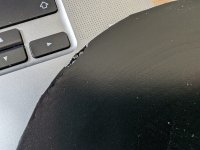This user has no status.
This user has no status.
Member
Hi everyone.
Right now I'm using a chinese rubber on the forehand side.
I've noticed that the rubber lose pretty quickly its tackiness.
How can I prevent that? How should I clean the rubber to regenerate the tackiness?
Please let me know you experience with this.
Right now I'm using a chinese rubber on the forehand side.
I've noticed that the rubber lose pretty quickly its tackiness.
How can I prevent that? How should I clean the rubber to regenerate the tackiness?
Please let me know you experience with this.












